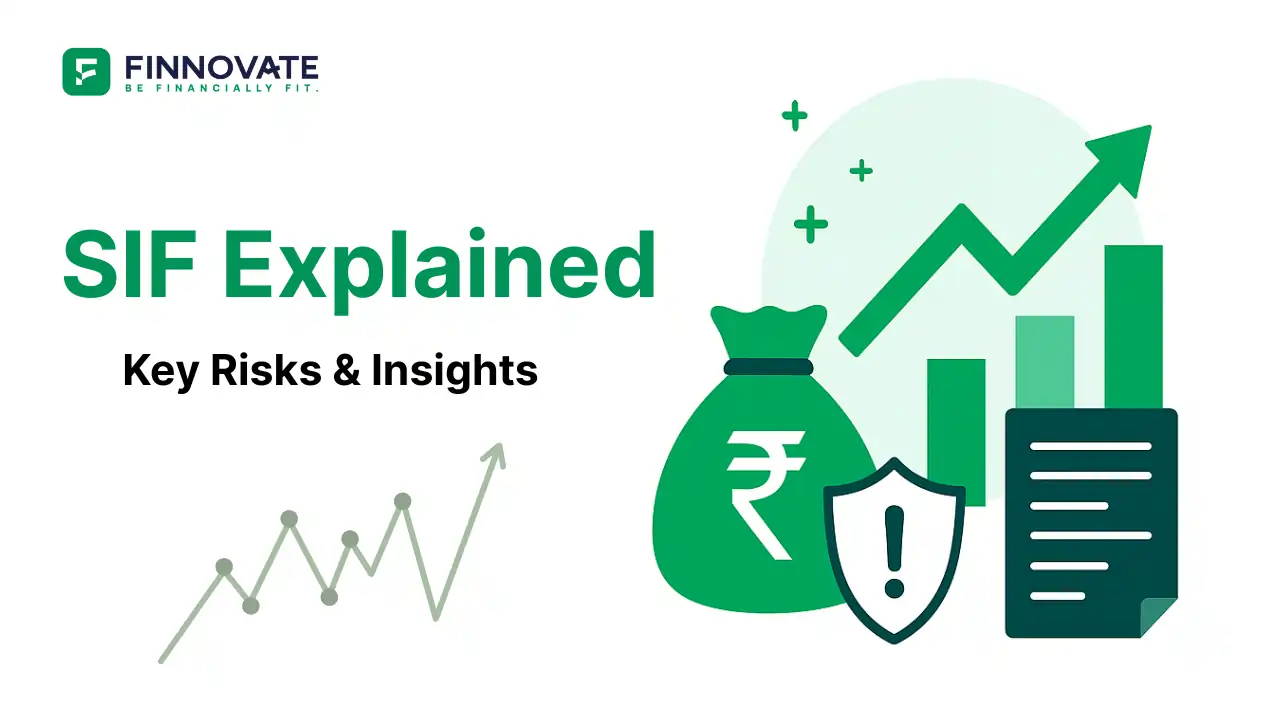
Warren Buffett Retires: Is Long-Term Investing Reaching Its Limits?
Warren Buffett’s retirement raises a bigger question for investors - can “hold forever...
Have you ever looked back at an investment decision and thought, “What was I thinking?”
Maybe you bought a stock just because everyone else was buying it. Or held onto a poorly performing mutual fund because you had already invested so much into it. These aren’t just mistakes - they're often the result of something deeper: cognitive biases.
Cognitive biases are mental shortcuts or emotional reactions that influence how we think and act - especially with money. In investing, they can cloud judgment, distort logic, and lead even experienced investors to make poor choices.
This is where behavioral finance comes in. It’s the study of how human psychology affects financial decisions. Understanding your own biases is one of the most powerful tools in becoming a better, more confident investor.
In this guide, we’ll break down the most common cognitive biases in investing, show you how they affect your financial decisions, and share practical steps to overcome them.
Cognitive biases are mental filters or thinking patterns that influence how we interpret information and make decisions - often without us even realizing it. In the world of investing, these biases can cloud your judgment, push you toward emotional decisions, and keep you from making rational, data-driven choices.
In simple terms, cognitive biases in investing are ways our brains trick us into making financial decisions that feel right but aren’t necessarily right.
These biases come from past experiences, personal beliefs, emotions like fear or greed, or even what we see others doing. While they may help us make quick decisions in everyday life, they often work against us when managing money.
Imagine this:
When the market is booming and the Nifty is trading at a 32x P/E ratio, many investors are eager to buy. But when the same index is available at a 12x P/E during a correction, they hesitate or avoid it altogether.
Logically, it should be the opposite. Buy low, sell high.
But emotions override logic, and that’s the essence of cognitive bias at work.
Recognizing these patterns is the first step to protecting your investments - and your peace of mind.
At the heart of every investing decision is a mix of logic, emotion, and instinct. While financial theories assume that investors act rationally, the reality is very different. Most of us are not as rational with money as we think - we’re human first, investors second.
Our brains are wired to take shortcuts when processing complex information. In psychology, these shortcuts are called heuristics. They help us react quickly but can also lead to errors in judgment, especially in high-stakes decisions like investing.
These biases can cause:
Understanding the psychology of investing doesn’t mean eliminating emotion - it means learning how to manage it. And the best way to do that is by identifying the specific biases that may be influencing your behavior.
Now that we understand what cognitive biases are and why they exist, let’s explore the ones that show up most often in investing. Each of these can subtly (or strongly) influence how you make decisions with your money - often without you even noticing.
What it is:
Confirmation bias happens when we seek out or focus only on information that supports what we already believe - while ignoring anything that challenges it.
Example in investing:
An investor who believes equity markets are too risky may only consume negative news about the stock market and avoid data that shows long-term gains. Similarly, someone who has only seen bull markets might think every dip is a buying opportunity, even when it’s not justified by fundamentals.
Why it’s harmful:
It traps you in your comfort zone. You ignore warning signs or alternate viewpoints, which could help you make better, more balanced decisions.
How to fix it:
Actively challenge your own views. Look at both sides of a situation before investing. If you think a stock is a sure winner, read why others are bearish on it.
What it is:
This bias refers to our natural tendency to feel the pain of a loss much more strongly than the joy of a similar gain.
Example in investing:
A young investor avoids equity entirely and invests in a liquid fund to avoid potential short-term losses. While it feels safer, the long-term returns suffer.
Let’s say you invest ₹10,000/month in:
By avoiding short-term risk, you sacrifice long-term wealth.
Why it’s harmful:
Loss aversion leads you to be overly conservative - even when you can afford to take more risk.
How to fix it:
Understand the difference between temporary volatility and permanent loss. Use data to evaluate long-term outcomes, not just short-term swings.
What it is:
Herd mentality is the tendency to follow the crowd - especially during moments of uncertainty. When everyone else is buying or selling, it feels safer to go along with them.
Example in investing:
Investors rushing to buy stocks when the market is booming, even at a 27x P/E, but staying away during corrections when the P/E is more attractive (13x). It’s the classic “buy high, sell low” trap—triggered by crowd behavior.
Why it’s harmful:
It makes you react emotionally, not strategically. You may end up overpaying for assets or exiting at the worst possible time.
How to fix it:
Pause when “everyone is doing it.” Use valuation metrics and your personal financial plan - not media hype or FOMO - as your decision guide.
What it is:
Endowment bias makes us overvalue what we already own - just because it’s ours. This leads to emotional attachment with specific investments.
Example in investing:
A long-term investor holds onto a once-great stock, refusing to sell it even when fundamentals have changed. Or averages down repeatedly, assuming it’s still a great pick, despite warning signs.
In Indian households, this often shows up in how gold or real estate is emotionally overvalued - regardless of actual returns.
Why it’s harmful:
You stay loyal to poor performers and miss better opportunities. Your portfolio becomes emotionally weighted instead of rationally designed.
How to fix it:
Review investments objectively - would you buy the same asset today at its current value? If not, ask why you’re still holding it.
What it is:
Recency bias is when recent events overly influence your decisions, even if they’re short-term or unusual.
Example in investing:
If the past few months were volatile, you might assume that’s the “new normal” and adjust your strategy out of fear. Or, after two bad experiences with gold funds, you might swear off gold altogether - even if the longer-term case still holds.
Why it’s harmful:
You base long-term decisions on short-term noise, leading to poor timing and missed opportunities.
How to fix it:
Zoom out. Look at 5–10 year trends instead of recent fluctuations. Stick to your investment thesis, not market mood swings.
What it is:
This is when we form fixed opinions about asset classes - thinking some are always risky or always safe, without considering context or price.
Example in investing:
Believing “tech stocks are too risky” or “government bonds are always safe.” In reality, any asset can be good at the right price - or bad at the wrong one.
Why it’s harmful:
It narrows your investment choices and keeps you from exploring options that could fit your goals better.
How to fix it:
Avoid labels. Evaluate assets based on current valuations, your time horizon, and your financial goals - not just reputation.
Now that you know which cognitive biases commonly creep into investing, the next step is to learn how to guard against them. While we can’t remove emotions entirely, we can build systems that help us make better decisions - even when our instincts try to pull us in the wrong direction.
Here are five simple, practical strategies to avoid costly investment mistakes caused by bias:
Feelings can lie - numbers usually don’t. Historical data shows that equity investments held for over 7 years rarely result in negative returns. Knowing this can give you the confidence to stay invested, even during temporary downturns.
What to do:
Before making a decision, look at long-term data, not just headlines. Check past performance over multiple market cycles and across asset classes.
Confidence is good - but overconfidence can be dangerous in investing. Thinking you know how the market will behave next week or believing a stock “can’t go wrong” are red flags.
What to do:
Test your assumptions. Ask for other opinions. You don’t have to agree - but it opens your thinking. Peer reviews and expert inputs add valuable perspective.
A well-defined financial plan gives structure to your decisions and reduces the influence of short-term emotions or news.
What to do:
Align each investment to a specific goal - like retirement, child’s education, or a home. When a bias kicks in, revisit the goal instead of reacting to the market.
Most biases emerge when we try to outguess the market. Asset allocation - how you split money between equity, debt, gold, etc. - automatically applies discipline.
What to do:
Decide your ideal allocation based on your goals and risk tolerance, then rebalance periodically. This nudges you to buy low and sell high - without relying on market timing.
An experienced advisor acts as your mirror - spotting patterns you may miss. They can challenge your biases and bring objectivity into the process.
What to do:
Speak with a SEBI-registered investment advisor or certified planner. They can help you build a roadmap that stays focused on your goals, not your gut reactions.
Cognitive biases are part of being human. But the more structured your approach, the less power they have over your decisions.
While cognitive bias is the problem, long-term discipline is the solution. Let’s compare how both sides behave in a real investing situation.
| Scenario | Under Bias | With Discipline |
|---|---|---|
| Market correction of -15% | Panic selling | Stays invested; reviews asset allocation |
| Gold rallies 25% in 6 months | Rushes to buy at peak | Checks long-term relevance of gold in portfolio |
| Friend’s stock doubles in 3 months | Buys the stock without due diligence | Evaluates if it fits his/her plan and risk profile |
| 2 years of flat returns in SIP | Stops SIP or switches funds impulsively | Continues SIP; tracks goals, not NAV |
| Global headlines of recession | Shifts everything to fixed deposit | Reviews diversification; maintains cash cushion |
This comparison shows that successful investing isn’t about prediction. It’s about preparation. When you focus on your plan, not your panic - you win.
So the next time you feel excited, scared, or overconfident about an investment - pause. Ask yourself: “Is this decision based on data and goals, or is it my bias talking?”
Every investor has cognitive biases but not every investor is ruled by them.
The difference lies in how you manage your behavior.
Want an investment plan that aligns with your goals - not your fears or emotions?
Book a free session with a Finnovate expert advisor and take your first step toward rational, goal-based investing.
Popular now

Learn how to easily download your NSDL CAS Statement in PDF format with our step-by-step g...

Explore what Specialised Investment Funds (SIFs) are, their benefits, taxation, minimum in...

Learn How to Download Your CDSL CAS Statement with our step-by-step guide. Easy instructio...

Looking for the best financial freedom books? Here’s a handpicked 2026 reading list with...